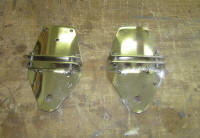
110 Cookson Lane | Whitefield, ME 04353 | 207-232-7600 | tim@lackeysailing.com
A few months ago, I sent off the original spreaders and bases to have new ones fabricated, as the old ones were in poor condition. While the new parts had been completed for some time, they'd been stored at my rigger's shop until now, so this was my first opportunity to see the new fabrications.
It promised to be a very warm day, but in the relative cool and shade of the morning I decided to work on removing the remaining mast hardware, first step towards the eventual refinishing of the spar. Fortunately, I decided to begin with the large main halyard reel winch. After removing the drum, I managed with moderate effort to remove five of the six screws securing the base to the spar; as usual, corrosion had set in between the aluminum spar and stainless screws, welding them in place, but my impact gun loosened all but the final one, which I had to cut with a grinder in order to remove the base.

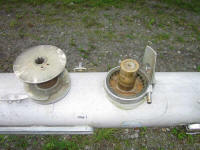
As the base came away, I was shocked to see a large piece of the mast come with it. Lurking beneath the winch base, completely hidden from view or contemplation, was a massive area of corrosion, complete with 1" hole and a large crack continuing off in one direction.
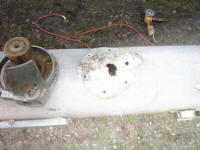

Needless to say, this depressing find abruptly changed my plans for the day, and I abandoned hardware removal to notify the owner, contact my rigger to determine any feasibility of repair to something like this (not expected, but worth asking), and to follow up on a lead I remembered from a few months ago about a possible T-34 spar available. This later led to a lead for a second used spar, and as of this writing I was still determining details and availability for both used masts. More on this to come later.
Setting aside this unwanted find for now, I moved ahead with various other jobs, beginning with some additional work on the Sardine stove mockup in light of additional information from Navigator Stove Works, builder of the stove. I've added these notes to the separate report on the Sardine installation proposal here:
Sardine Mockup 6/20/12
The companionway hatch offered the last remaining vestige of the thick, impenetrable deck paint that had once covered every surface. I spent an inordinately long time removing this paint and sanding the hatch through 120 grit to prepare it for minor patching (fastener holes) and priming (along with the cockpit locker lids) in the near future. Once I'd stripped the paint, I prepared the screw holes and one or two small gouges and applied a first round of epoxy fairing compound.
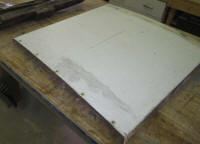
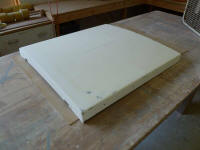
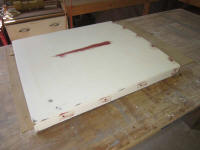
Next, I prepared to tack the new chainplate structure in place on the port side. For alignment purposes, as well as to provide a means of clamping the heavy fiberglass core in place, I first installed through its deck hole the port chainplate itself, holding it in place with wooden wedges and locking pliers. Reviewing original photos, I determined that the chainplate had originally been oriented plumb, and parallel to the inboard edge of the support core.
Although I aligned the chainplate with the deck surface along a visible line in the chainplate, the actual depth of the chainplate wasn't that important at the moment, as I was using it for a means of securing the core in the correct position only.
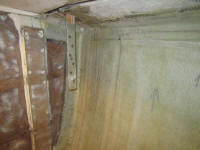
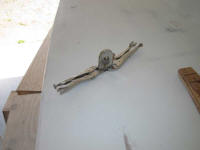
To allow ample space for the fiberglass tabbing that would secure the core to the hull and deck, I temporarily added a 1/4" spacer between it and the stainless chainplate to offset the core by that distance from the deck slot. Then, I applied some thickened epoxy adhesive to the bonding surfaces of the fiberglass core, and clamped it in place against the hull, deck, and chainplate itself.
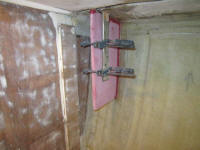
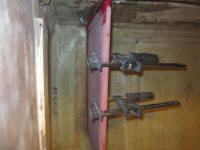
Total Time on This Job Today: 7 hours

